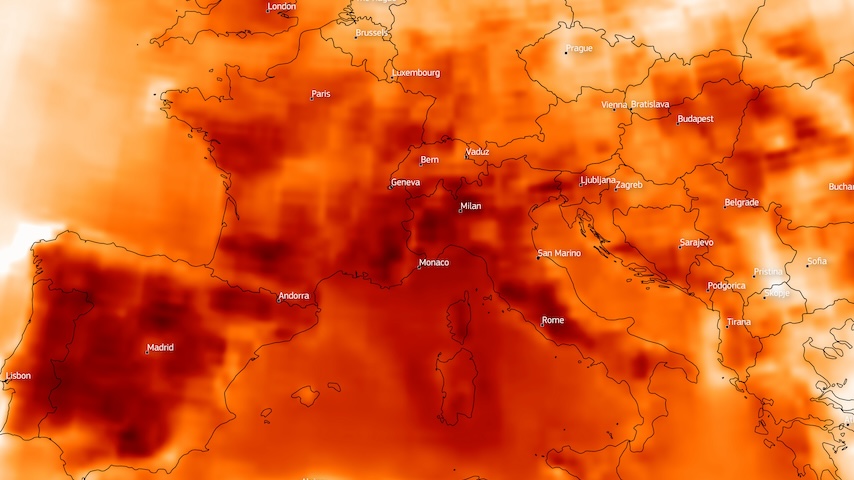Half of Recent Heat-Related Deaths in Europe in Recent Years Are Thanks to Climate Change
Photo via Copernicus Climate Change Service/Wikimedia Commons
One reason it’s tough to pin a body count on climate change is that the disasters a warming world spawns often would happen anyway, just less frequently and in diminished form. Hurricanes have always hit Florida, bad monsoon years in India have been a risk since agriculture began. Attribution studies have gotten much better and faster, meaning we now often know soon after a given event the role that climate change played in its occurrence — but that still doesn’t tell us how many of the casualties happened thanks to those few extra degrees in the atmosphere.
That’s especially true when it comes to heat waves. Heat-related deaths are notoriously difficult to count, and major heat events often only yield a total toll months after the fact. Teasing out from that already-complicated morass how much of the mortality stemmed from climate change’s input is tougher still, but a new study managed the feat for the then-hottest summer in Europe, in 2022.
“[W]e attribute—across all sex or age groups—around half of heat-related deaths in Europe during recent summers to human-induced climate change,” wrote study authors led by Thessa Beck, of the Barcelona Institute for Global Health, in a Nature journal called npj Climate and Atmospheric Science. “Our findings highlight that human-induced climate change poses a risk beyond vulnerable populations, extreme temperatures, heatwaves, or Southern regions characterized by high summer temperatures.”
The researchers compared the existing data on temperature and deaths across Europe to a counterfactual scenario where warming and its effects on mortality were removed. They found that in 2022, when more 68,500 heat-related deaths were recorded, just over 38,000 (56 percent) of those were caused by climate change.
The percentage of heat-related deaths attributable to warming varied substantially by country, and interestingly there was no real north-south gradient involved. Some of the highest values were seen in Sweden and Norway, where 77 and 71 percent, respectively, of the deaths could be blamed on climate change; in Finland, though, that number was only 26 percent. “These findings highlight that temperature exposure does not solely determine the health burden imposed by heat,” the authors wrote. “Socio-demographic characteristics and resilience to heat differ between and within countries, and play an important role in the vulnerability to the impacts of human-induced climate change.”
They then compared the 2022 results to the 2015 to 2021 period, and found largely similar results. In each of those summers, the proportion ranged between 44 and 54 percent, for an absolute number of climate change-caused heat deaths between about 19,000 and 28,000 per year. When activists and politicians say that warming is killing us, they are not exaggerating.
These are fairly dire results, especially considering that 2022’s record warmth has now been eclipsed, in line with the fate of all climate records these days. The Copernicus Climate Change Service found that the June to August period for this year was easily the warmest ever recorded, at 1.54 degrees Celsius above the 1991 to 2020 average; 2022’s record was 1.34 degrees C.
“Fueled by human-induced climate change, increases in temperature and heat-related mortality in Europe have sped up in recent years and will most likely continue do so in the near future unless strong adaptation and mitigation actions are put in place,” the authors of the new study wrote. “[O]ur study urgently calls for national governments and agencies in Europe to increase the ambition and effectiveness of heat surveillance and prevention measures, new adaptation strategies, and global mitigation efforts.”